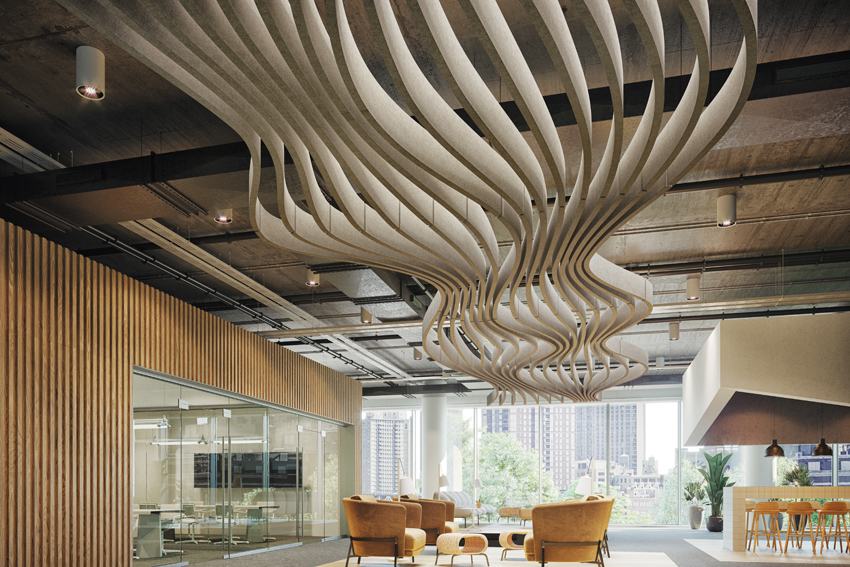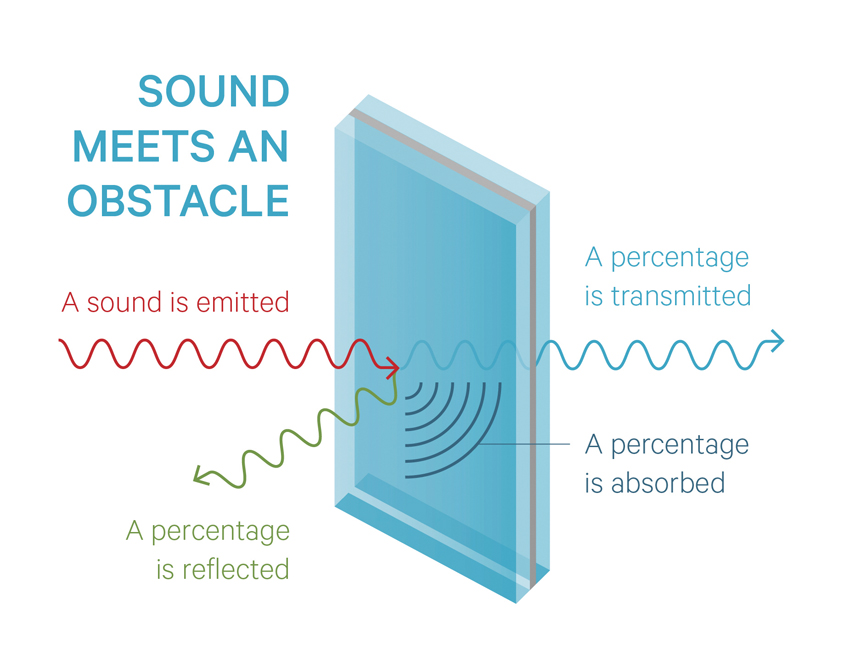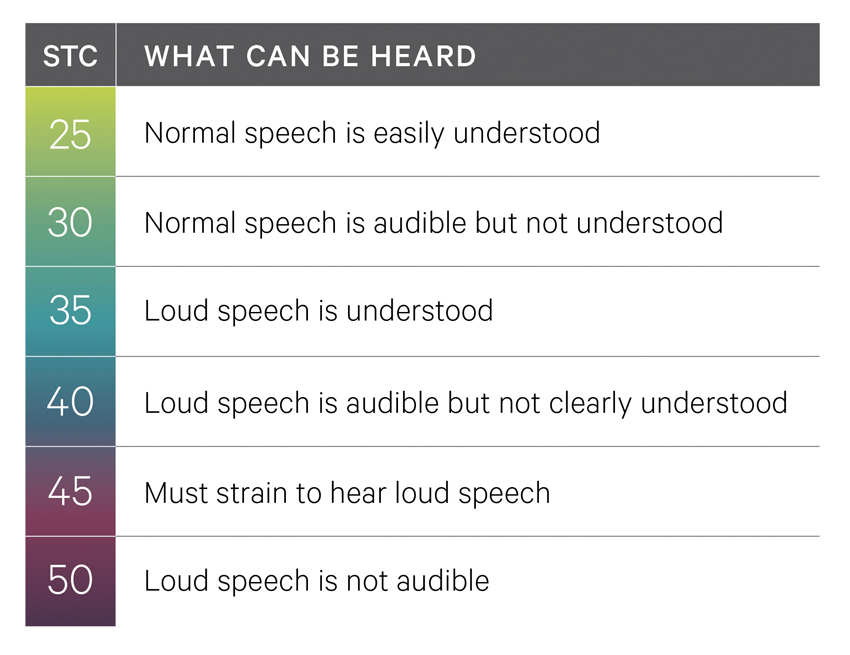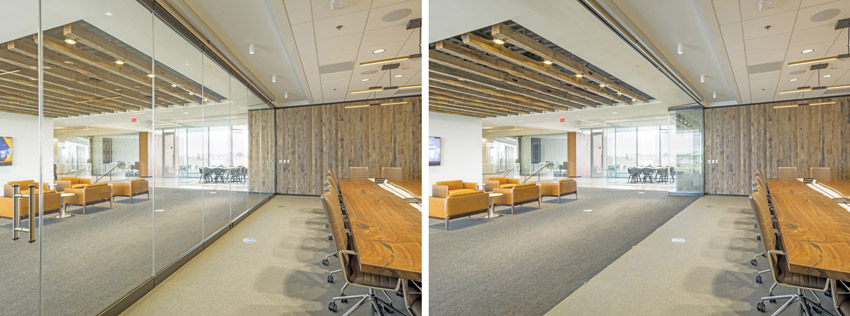Designing for Better Acoustics
Learning Objectives:
- Identify and recognize the significance of acoustic design as part of the overall interior design of a space to improve human health and welfare.
- Assess the acoustical performance aspects of operable glass walls to create a positive indoor environmental quality while still controlling sound in a building.
- Explain the importance of proper acoustical treatments on walls, ceilings, doors, and other interior surfaces to eliminate unwanted noise and reverberation in a building.
- Determine ways to incorporate the acoustical design principles presented into buildings as shown in case studies reflecting improved welfare for occupants.
Credits:
This course is approved as a Structured Course
This course can be self-reported to the AANB, as per their CE Guidelines
Approved for structured learning
Approved for Core Learning
This course can be self-reported to the NLAA
Course may qualify for Learning Hours with NWTAA
Course eligible for OAA Learning Hours
This course is approved as a core course
This course can be self-reported for Learning Units to the Architectural Institute of British Columbia
People experience building interiors with all of their senses—sight, touch, smell, sometimes taste, and quite significantly, hearing. When those sensations are pleasant, supportive of health, or otherwise in line with what we expect, then a positive indoor environmental quality is achieved. When we experience negative sensations or subtle background conditions over time, then the indoor environmental quality is less desirable and may even be harmful to our health and welfare. All of these traits are particularly true when it comes to sound in buildings. Pleasant music, soft background sounds, or appropriate levels of quietness help define a space as different from one with distracting background noise or a lack of acoustical control. It has been well-documented by numerous sources that poor acoustics or exposure to unwanted noise in buildings negatively impacts the ability of people to concentrate, be productive, learn, or carry on meaningful conversations. Further, those exposed to these conditions over the long term can see a deterioration in their health related to physical and psychological degradation.

Photo courtesy of Turf Design
All of our senses are involved in the experience of a building, including our sense of hearing. Spaces that are designed for good acoustics produce better results for the people inside a building.
Based on all of the above, this course focuses on how the interior design of buildings can directly and proactively address acoustics and sound control. In particular, it looks at some specific strategies related to common interior surfaces, including walls and ceilings. Additionally, acoustical control at openings such as doors and operable walls is addressed to maintain acoustical separations. Overall, we explore different strategies and techniques to create positive indoor environments with desirable acoustical results.
Acoustics Overview
Sound is energy that radiates out from a source, just like heat and light are radiative energy. Understanding how to direct, restrict, or otherwise control sound is similar to how we do the same with other types of energy.

Images courtesy of NanaWall
When sound energy meets an obstacle (i.e., an interior surface), part is reflected, part is absorbed, and part is transmitted
In the case of interior acoustics, design strategies focus on what happens when sound waves travel into or through a space and meet a surface (i.e., ceiling, floor, wall, door, glazing, etc.). The particular effect that surface will have on the emitted sound waves will depend directly on the acoustic characteristics of the material encountered, but all will exhibit differing levels of the same three actions: In the case of interior acoustics, design strategies focus on what happens when sound waves travel into or through a space and meet a surface (i.e., ceiling, floor, wall, door, glazing, etc.). The particular effect that surface will have on the emitted sound waves will depend directly on the acoustic characteristics of the material encountered, but all will exhibit differing levels of the same three actions:
- Reflection: Some percentage of the sound will bounce off of the surface and be reflected back into the space. If this condition is severe, echoes are heard or sound levels seem to intensify.
- Absorption: Some materials (usually softer, porous ones) are very good at absorbing sound waves and dissipating the energy. In some situations, sound-absorptive materials are added to interior spaces to counteract reflection.
- Transmittance: Whatever sound is not reflected or absorbed is transmitted through the material or the assembly.

Image courtesy of NanaWall
STC ratings indicate how much sound is being prevented from transmission. The chart above provides some general guidance so designers can select the appropriate level for interior.
There are a number of different ways that each of these acoustical characteristics is measured. All are based on laboratory testing of materials and have become common and well-documented. One such measured test focuses on sound transmittance and measures how much sound passes through a given material or assembly. This test is referred to as a sound transmission class (STC) rating and is often provided by manufacturers as a means for designers to select appropriate materials to use in buildings. Essentially, the STC rating is a way to determine how much sound (measured in decibels) is reduced as it passes through a material or an assembly. The higher the STC rating, the more sound that does not transmit (i.e., more quiet). For most building conditions, an STC rating on the order of 40–45 is appropriate for most normal conditions, but ranges between 35 and 55 are also common.

Photos courtesy of PABCO Gypsum
Installing sound-reducing drywall can produce excellent acoustical control inside a building while relying only on standard drywall installation methods.
Acoustics in Framed Interior Partitions
Interior partitions are routinely constructed of metal or wood framing with gypsum board (drywall) on both sides. Gypsum panels are manufactured to meet various requirements as detailed by building codes, standards organizations, or other high-performance building guidelines. Most notable of these requirements is fire resistance, acoustic performance, mold-resistance, and abuse and impact resistance. Gypsum panels are tested per standard test methods to verify that they meet or exceed the criteria of given classifications.
With the increased focus on acoustics, human health, and worker productivity, higher STC ratings are more routinely specified in buildings. To meet these higher STC ratings, gypsum board partitions require enhancements beyond what conventional gypsum panels provide. Traditionally, these enhancements include adding sound insulation between the studs, using thicker or multiple layers of gypsum panels, or using resilient channels to decouple the drywall from the studs, all of which require additional time and extra cost. In the case of thicker or multiple layers of gypsum panels, the usable square footage of space is decreased and the increased depth of the partition can impact detail coordination, particularly around door openings and utility boxes.
Constrained Layer Damped (CLD) Gypsum Panels
As an alternative to conventional gypsum panels, there are some advanced products simply referred to as constrained layer damped (CLD) gypsum panels that offer excellent acoustic performance while integrating more easily with standard construction. Acoustic testing has been performed on a vast number of interior partitions using CLD panels to document the STC rating of the particular assembly. In many cases, the desired acoustic performance can be achieved with a single CLD layer without the need for multi-layered gypsum panels, resilient channels, or supplemental products. This also decreases the chance for improper installation that will negatively affect acoustic performance.
There are various CLD products available on the market, some more technologically advanced than others. These include a broad portfolio of products that can suit a variety of applications—from entry-level CLD panels for do-it-yourselfers to the highest-performing CLD panels ideal for high-end projects, such as recording studios, home and commercial theaters, and other sound rooms.
Variations of the Product
Just like other gypsum panels, CLD panels can be manufactured to meet or exceed other building code requirements, most importantly, the life-safety requirement of fire resistance. Some CLD panels have been tested in a number of different types of assemblies according to specific requirements to provide different fire-resistant-rated partitions that can be used to satisfy building code requirements
Some project applications require mold-resistant drywall panels. CLD panels can be manufactured to meet these requirements using special formulations for both the core and paper facings. Typically, mold-resistant CLD panels are available in thicknesses of ½ inch for use in non-fire-resistant-rated partitions and 5⁄8-inch Type X for use in fire-rated assemblies. For circumstances that warrant it, there is also sound-reducing drywall that can resist impact and abuse.
Ease of Installation
Field-installed products are often only as good as the quality of the installation. To help in this regard, CLD panels offer some intriguing advantages. First, there may be fewer layers of drywall to install, as STC ratings can be achieved with a single CLD panel instead of multiple layers of drywall. This saves installation time, reduces action steps, and helps control labor costs. Second, at least one manufacturer has developed panels that allow installers to easily score, snap, hang, and finish the drywall just like standard gypsum wallboard. With no paper or metal in the center of the panel, the drywall delivers high acoustic performance with improved workability to speed up installation time.
Related Products
To achieve the best performance in a partition, the joints and penetrations around and in between CLD panels also need to be addressed. Typically this means acoustical sealants and caulk/putty need to be properly applied to the perimeter of the wall and penetrations.
With the wide variety of building types and possible applications, it is recommended to work with a manufacturer and an acoustic consultant early in the design process to determine the best and most cost-effective products for any given project. It is best to work with manufacturers that bring a depth of technical knowledge, independent testing results, and a willingness to share the data with the design professionals who request it. These manufacturers also provide continuing education opportunities directly to firms or through professional associations
David E. Marsh, FASA, is the president and principal of Marsh/PMK International, a professional consulting firm specializing in acoustics and audiovisual system design. Referencing a recent corporate office project, he says, “The architect’s drawing notes called for a particular type of acoustical panel. We recommended a particular sound-reducing drywall manufacturer because of the research and development effort and money invested into the products, and the resulting lab test information available to consultants.”

Photos courtesy of NanaWall
Frameless operable glass walls, like the ones shown here, provide open, flexible integration of spaces when open and private, acoustically controlled spaces when closed.
Notice

www.ambico.com

www.nanawall.com/sound-control-solutions

www.quietrock.com

www.turf.design















